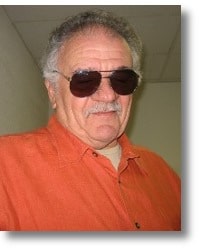By Fred Cohen
Prisons are not supposed to be pleasant, accommodating facilities, correct? Do the crime, do the time echoes through the neighborhood bar and on the first tee at a more remote country club.
The problem with this thinking is that our prisons are so unaccommodating that when those who have done their time make their inevitable return to the community, there is a 67% chance that they will commit another crime within three years of their release. And when they do, the victim of the crime may be you or me.
When compared to other inhumane aspects of the prison experience that breed criminality, a lack of communication access to the outside world might seem like an almost frivolous complaint. Yet, maintaining familial and other support networks plays a critical role in prisoners’ successful re-entry into society.
In most cases, individuals are incarcerated in facilities that are on average more than 100 miles away from loved ones. Therefore, telephone communication is the key to keeping family bonds intact. Research supports the need for communication beyond in-person visits, as well as the need for affordable phone calls.
In one study, more than half of incarcerated parents reported never receiving a personal visit from their children. In a Vera Institute study, 27% of the incarcerated people surveyed indicated that they had not had any visits during their incarceration, and the primary reason was that family members lived too far away. Seventy-six percent of family members described significant barriers to maintaining contact, including the cost of calling cards and expensive collect calls.
Another analysis found that children who are incarcerated or in juvenile detention do better when they have family support. Here again, the cost of telephone calls was reported as a major barrier to maintaining contact. These burdens and costs are all the more challenging because family members of those who are incarcerated struggle with their own limited incomes, educational attainment, and resources.
Since even prisoners with normal hearing face difficulty staying in touch with the outside world, consider the barriers to communications facing those with hearing loss. Many must use a Text Telephone (TTY) to communicate, which requires them to slowly, painstakingly tap out each letter. Meanwhile, prisoners (or their families) will likely be charged a dollar for each minute this 50-year-old device is used. Federal disability rights laws require that people with communication disabilities be afforded the same opportunity to converse with the outside world as the rest of the prison population. In fact, however, in most prisons and jails, inmates have limited or no access to such telecommunications, and what access they do have comes at a higher price than what hearing prisoners pay.
In March 2013, the ACLU submitted comments to the Federal Communications Commission urging it to provide clear guidance to prisons and jails on the range of auxiliary aids and services that prisons should provide to ensure equal and effective communication access for prisoners with disabilities.
There are easy fixes to this problem. For most people who use sign language to communicate, videophones–-easy to set up and simple to use–are now the standard technology. For people who are hard of hearing, amplified phones or captioned telephones are the standard technologies. Yet, with very rare exceptions, prisons do not provide these accessible technologies.
Thus, because of costly and outmoded technology, an opportunity to help is converted instead into an expensive, counterproductive situation.
Do the crime, do the time. Quietly.
Fred Cohen, LLB, LLM, a frequent contributor to this blog, is a graduate of Yale Law School. He has been a full professor at a number of leading law schools and was a founder of the Graduate School of Criminal Justice at the State University of New York at Albany. One of his areas of expertise is the legal rights of prisoners.
Before entering the law, Cohen excelled on a different kind of court—so much so that on May 20, the Tucson resident will be inducted into the Philadelphia Jewish Sports Hall of Fame. After playing basketball at Duquesne University alongside Si Green (who was a first-round NBA draft choice in 1956 ahead of Bill Russell), Cohen transferred to Temple University in Philadelphia, where he teamed with All-Americans Hal Lear and Guy Rogers. The Owls reached the NCAA Final Four in 1956 and along the way, Cohen scored the game-winning basket against Holy Cross’s Tommy Heinsohn, an NBA Hall of Famer, in the first round. In the next round, a victory over the University of Connecticut, Cohen snared 34 rebounds, an NCAA tournament record that still stands.







